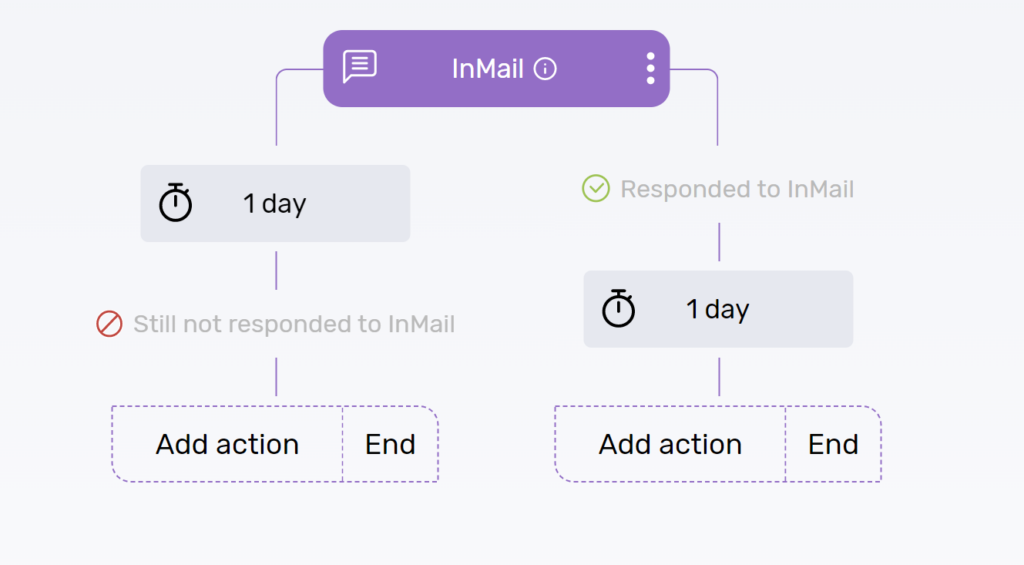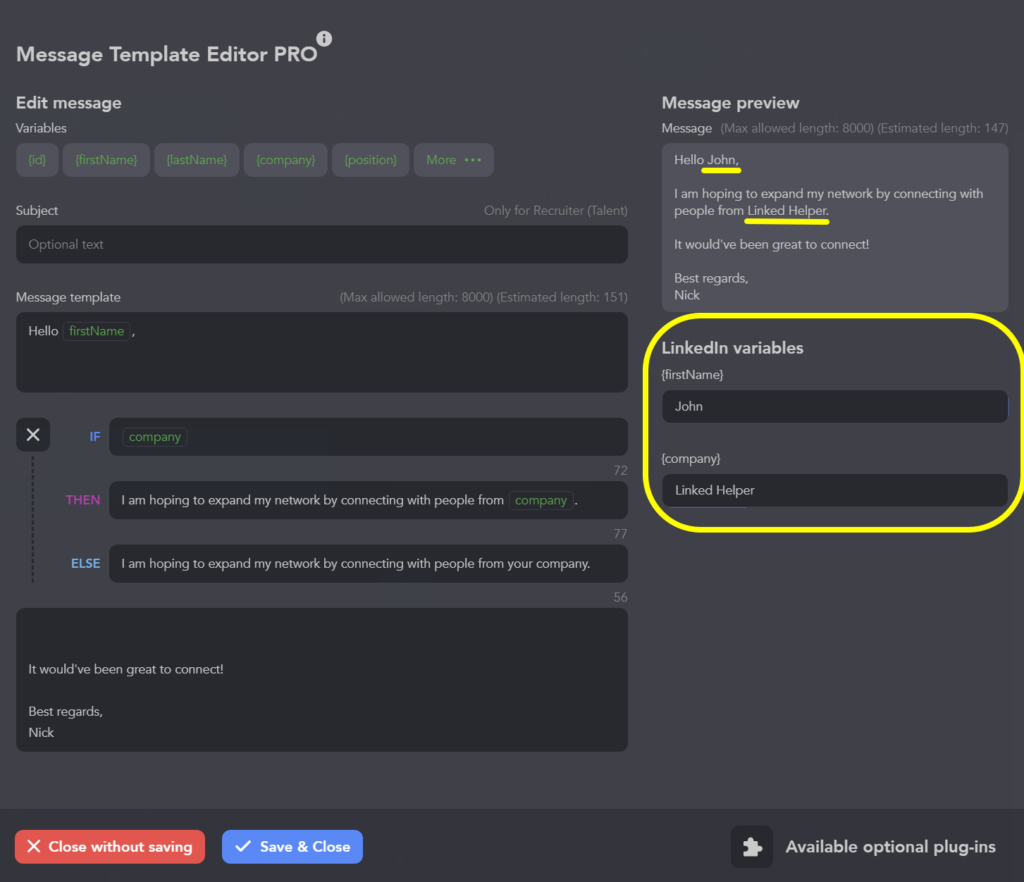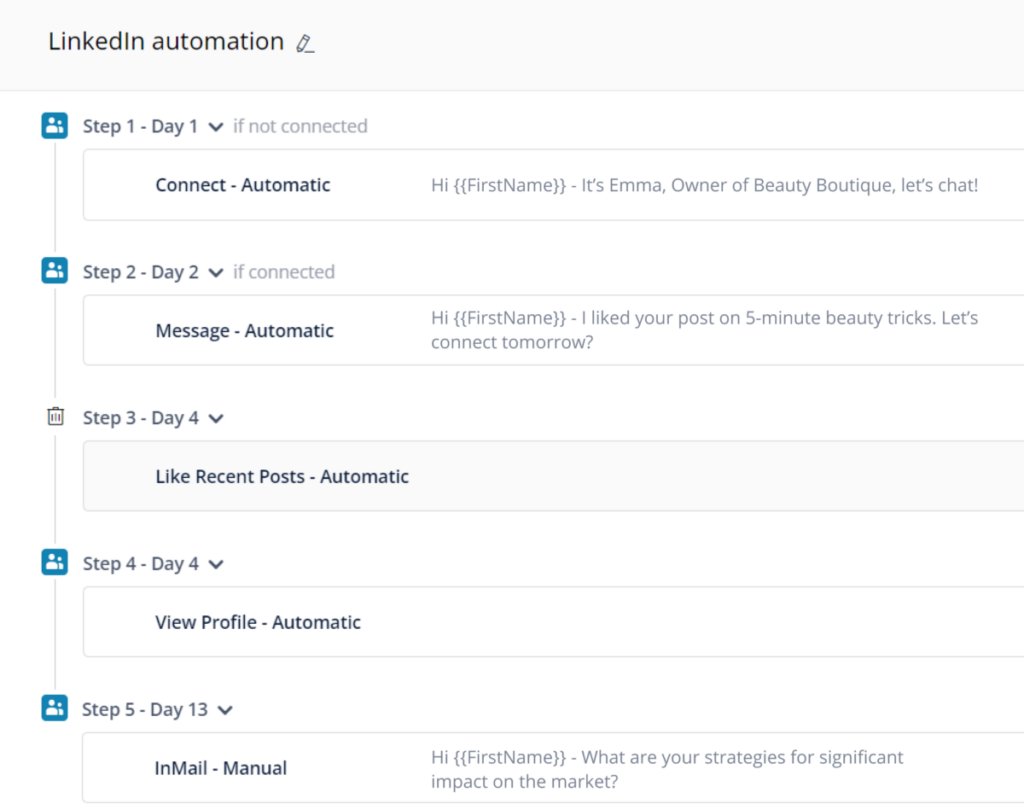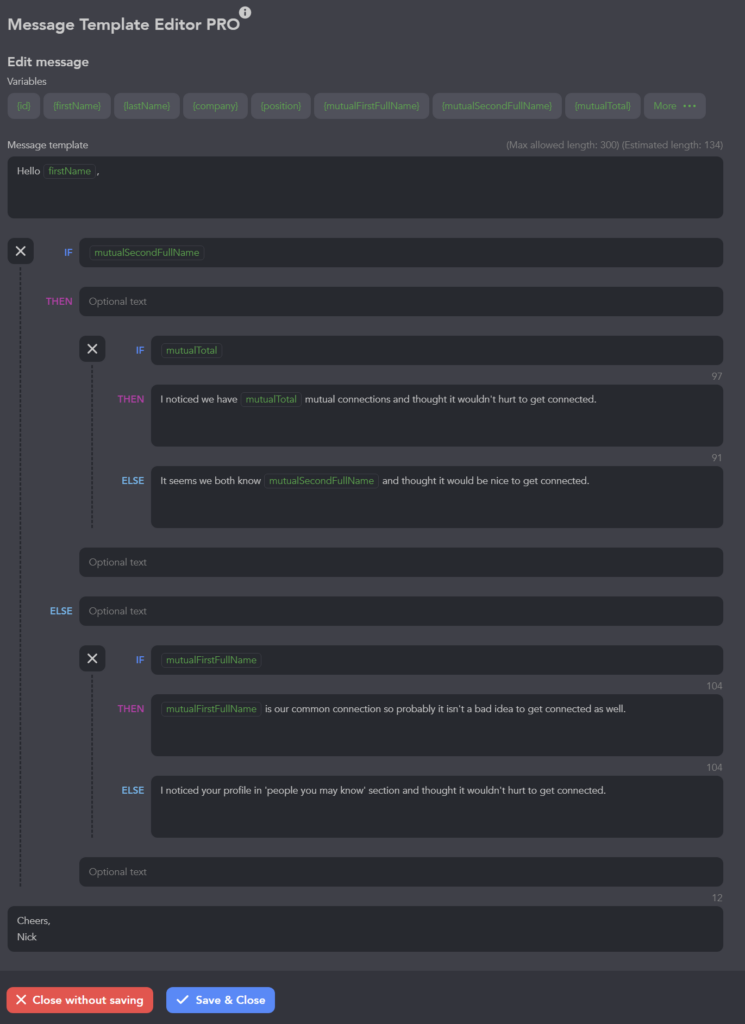In a world where people expect almost instant responses from brands, it’s easy to fall behind when you’re not available to monitor your messages 24/7. The same goes for LinkedIn, where B2B companies may often get inquiries about their product and service offerings as well as messages from prospective employees. However, LinkedIn is also a place where you do the reaching out so you can build new connections and establish social selling opportunities.
This is why setting up automated LinkedIn messaging using AI technology could be an ideal solution for many businesses. In this post, we give you an in-depth look at the concept of automating LinkedIn messaging and whether there are any safety risks involved. It also provides you with essential steps on how to set up automated messages on the platform. Let’s get started.
Implementing AI to Automate LinkedIn Messaging:
What is Message Automation on LinkedIn?
As you can tell from the name, message automation on LinkedIn is the process of setting up messages to be sent automatically to select LinkedIn users. These automated messages may be set up to be sent automatically according to a specific sequence. So for example, you may set up several messages to be sent out at strategic intervals depending on whether the recipient responded to your first InMail. Or they may also be set up so that people who message you on the platform get an instant response.

Source: help.dripify.io
Use Cases of LinkedIn Message Automation
Message automation on LinkedIn serves a number of purposes. Some of the most common use cases include:
- Sending a personalized message along with your connection requests. Automated messages can be particularly useful if you’re sending multiple connection requests to grow your network.
- Developing a social selling campaign involving a series of follow-up messages sent in a sequence. Follow-up messages can be planned ahead of time and scheduled to be sent out at specific intervals.
- Creating a powerful outreach campaign involving a custom target audience. You can customize a template to cater to a specific target audience and schedule the messages to be sent out to a large number of recipients to maximize your outreach efforts.
- Sending proactive “thank you” messages to users who have accepted your connection request. This helps to start a conversation or keep it going, which will then help to strengthen your relationship with them.
- Setting up autoresponder messages for when you’re away or unavailable to respond right away. This helps set clear expectations about when you can respond and let them know that you’re not just ignoring them.
Why Automate Your LinkedIn Messaging?
Wondering why you should use automation for your LinkedIn messaging? The short answer is that you get to exponentially maximize the results of your campaign and outreach efforts. Here’s a quick breakdown of the leading benefits of automating messages on LinkedIn.
It Helps You Save Time
Efficiency is the ultimate benefit of LinkedIn messaging automation. You may not be manually crafting a new message for every person you’re trying to reach. But the manual process of copying and pasting a template and personalizing it for each recipient still takes up a huge chunk of your time. Not to mention having to manually click on and visit each profile to send out those messages.
With automation, you can instantly send out messages to multiple recipients at a time. If you’re using the right tool, those messages will also be automatically personalized for each recipient, so it doesn’t feel too generic. This frees up your time and allows you to focus on more mentally intensive tasks such as engaging with the recipients who responded.
It Maximizes Your Reach
The ability to send messages to hundreds of LinkedIn users at a time means you’re also benefiting in terms of maximized reach. Let’s say you can normally send out a dozen or so messages when you visit every profile individually and manually copy-paste your message. An automation tool, on the other hand, will be able to send your message to hundreds of users at a time. This means you get to grow your reach exponentially and maximize the impact of your messaging strategy.
Some tools will even let you send messages to other users who are a part of the same LinkedIn Group even if you’re not connected. As such, you can effectively connect with several individuals who show their interest in a specific topic by being a part of a related Group.

Source: support.linkedhelper.com
Is It Safe to Automate LinkedIn Messaging?
Although AI tools have made it possible to automate your social media communications, there’s a fair amount of skepticism about using them to automate your LinkedIn messaging. This is only fair since many platforms prohibit the use of bots or automated services to access the services, which includes sending or redirecting messages.
However, there are a number of tools out there that allow you to set up LinkedIn messaging automation. This should be enough to tell you that there are possible workarounds to these rules. So as long as you’re using reliable tools and following automation best practices, it should be reasonably safe to automate your LinkedIn messages.
Steps to Set Up Automated Messages on LinkedIn
Now that we have the basics established, it’s time to get to the most exciting part of this guide. Here are x essential steps to set up automated messages on LinkedIn.
Step 1: Define Your Goals
First, have a clear idea of why you’re automating your LinkedIn messages. What is the intent of your messages? Do you wish to build a larger network by sending a large number of personalized messages with your connect requests, for example? Or perhaps you want plenty of people to try your product demo.
It’s important that you start with a proper definition of your goals so you can build your automation strategy around them. Your goals will more or less determine how many messages you need to send out, what type of automation you need, whether you need to set up a messaging sequence, and so on. As such, it will also be a factor in deciding which automation tool should be best for your strategy.
Step 2: Choose a Reliable Automation Tool
The next step is one of the most critical since you need a third-party automation tool to set up automated messages on LinkedIn. You can’t automate messages using the LinkedIn platform itself. However, you’ll find several LinkedIn automation tools that come with the capability to set up automated messaging on the platform.
Most of these automation tools are powered by AI and integrate with your CRM to personalize and automate your messaging. Here’s a quick look at some of the best options to consider:
LinkedIn Helper
One of the safest, most powerful LinkedIn automation tools in the market, LinkedIn Helper makes it easy to find relevant profiles that fit your target audience. This may include users whose profiles turn up in the search results for specific keywords or even people who’ve interacted with a specific post. You can then set up a messaging campaign based on the contact information you’ve collected.
This tool allows you to create messaging templates and then personalize them using different variables. That way, you can ensure that all the automated messages you send out still feel personal and resonate with the people you want to reach.

Source: support.linkedhelper.com
Reply.io
If you’re looking for something a little more beginner-friendly, then Reply.io is an excellent automation tool that supports automated messaging for LinkedIn. You can set up a series of automated and semi-automated sequences for a powerful messaging strategy. It also allows 100% personalization with a number of variables that can be applied to your pre-populated messages.

Octopus CRM
This all-in-one LinkedIn automation tool lets you automate the process of sending connection requests with highly personalized messages that will boost your chances of connecting with prospects. It will also send automated “thank you” messages as soon as someone accepts your connection request, allowing you to keep the conversation going.
Octopus CRM comes with the capability to message hundreds of first-level connections in bulk, helping you save time in the process. You can even create your own LinkedIn lead generation funnel to organize your outreach and messaging efforts.
Step 3: Narrow Down the Contacts You Wish to Target
Once you’ve finalized an automation tool, it’s time to decide which contacts you want to target with your messages. Do you want to send a connect request to people in your mailing list, for example? Or perhaps you want to invite your first-level connections to an exclusive product demo?
This is an essential step as it helps you streamline your efforts and ensures that you’re reaching a highly relevant audience. After you’ve narrowed them down, you’ll need to add them to your campaign. Some tools will give you the option to research prospects that match a specific set of criteria, which is a great option for cold outreach campaigns. You’d also typically get the option to import an existing list from a reliable data provider.
Step 4: Craft a Powerful Message Template
The next step is to come up with the message that you will be sending to your contacts. This will largely depend on the goal of your campaign, but keep in mind to follow LinkedIn messaging best practices for them to have an impact. For instance, you wouldn’t want to start selling if it’s your first time contacting those people, and you wouldn’t want to oversell even after the first response.
Don’t forget that this will be used as a template for your automated messages. At the same time, they can’t feel overly generic or your recipients may not feel valued and hesitate to respond. That’s where AI comes in, offering you the ability to deliver messages that are personalized for each recipient based on different customization variables.
So you can go beyond first and last names and include variables such as company name, position, industry, name of mutual connections, and number of mutual connections. Some will even let you include images or videos to further add to the value of your message.

Source: support.linkedhelper.com
Step 5: Set Up an Automation Sequence
Finally, it’s time to create an automation sequence that will outline when or how your messages will go out. These messages will typically be triggered by a certain action (or even inaction in some instances) and will follow a set schedule.
For instance, you may set up a sequence so that you send a follow-up message if someone doesn’t respond to your connect request within one week. Or you may choose to send a connect request to someone who recently liked your post.
Best Practices for Automating LinkedIn Messaging
While the above steps alone are enough to set you up for a solid LinkedIn message automation campaign, it’s also important to keep a few best practices in mind. The following best practices will help you ensure that you safely and successfully send out automated messages on the platform.
Be Mindful of LinkedIn’s Daily Limits
As mentioned earlier, social media platforms such as LinkedIn are against the usage of bots and automated services to send or redirect messages. So to ensure that you don’t get flagged and subsequently banned by the system, make sure you’re sending out messages with the platform’s daily limits in mind. Plan your automation campaigns so as not to exceed 250 actions per day, which would include connection requests and messages.
Write an Attractive Intro
Shorter subject lines can grab attention more effectively since recipients can instantly know what the message is going to be about. Although you don’t get to write subject lines on LinkedIn, the intro of your message will be previewed in recipients’ inboxes. Use this as an opportunity to get straight to the point and provide value immediately so as to get more people to open your messages.
Analyze and Learn to See What Works
Last but not least, make sure you’re closely monitoring how your automated messages are working. Test different schedules and sequences as well as custom variables to see what delivers the most impact. You should also test different templates and wordings to see how your audience is responding to them. This will help you fine-tune your automated LinkedIn messages to get the most out of them.
Making AI Work for You
With the right approach, AI technology solutions can work wonders for your LinkedIn strategy, especially when it comes to automation. It can help you deliver messages more efficiently and exponentially grow your reach. Make the most of the tools and tips provided above to implement AI for your automated LinkedIn messaging.
Frequently Asked Questions
Is there a way to automate LinkedIn messages?
There are third-party tools you can use to automate LinkedIn messages.
Can I send a message to all my LinkedIn connections at once?
Some third-party automation tools will let you message all your LinkedIn connections at once.
How many LinkedIn messages can I send per day?
LinkedIn doesn’t specify the number of messages you can send per day, although it’s best to limit it to a couple of hundred. Recruiters will have the option to send up to 1,000 InMails in a day.
What happens if you send too many LinkedIn connections in a day?
If you send too many connection requests in a day, LinkedIn may suspect the use of automation services and might even end up banning your account.
Can you send unlimited messages on LinkedIn Premium?
LinkedIn limits the number of InMail messages you can send with a Premium account based on the number of credits you have.
lamhoangmedia.com | 2023-12-13 21:42:34 – influencermarketinghub.com
